
Streetscapes
Since 1955, New Zealand has prioritised cars in the design of our cities and streets. But what does that mean for anyone who isn’t behind the wheel?
One April morning in 2018, Christine* got up early and hurried to get ready for her job driving a mobile library. Her commute should have been easy. All she had to do was cross Oteha Valley Road on Auckland’s North Shore and walk about a hundred metres to her bus stop. She set out at about 7.30am. Minutes later, she was struck and killed by a car. * Christine’s surname and some details of the case have been suppressed by the court.
What happened next played out in a familiar pattern. The media reported the traffic delays caused by the collision. Police investigated, and eventually charged a man with a driving offence. The defendant, who was 19 at the time of the crash, pleaded guilty and was convicted three years later, on April 1, 2021. In official records, he will likely be the only person held responsible for Christine’s death.
Those records don’t tell the full story. Though Christine’s walk to her bus stop was short, it was fraught with danger. Oteha Valley Road is four lanes wide, with a median strip in the middle. She was stepping off that median when she was struck. The speed limit was 50 kilometres per hour, a pace that kills pedestrians in 80 per cent of collisions, but because of the road’s breadth and easy, downhill camber, vehicles often travel faster. Christine was crossing near Harrowglen Drive, a residential street filled with family homes. Despite that, there was no pedestrian crossing near the bus stop. To get to one, she would have had to walk three times as far, and she was trying to get to work on time. On April 12, she decided to take a risk with the tide of morning commuters.
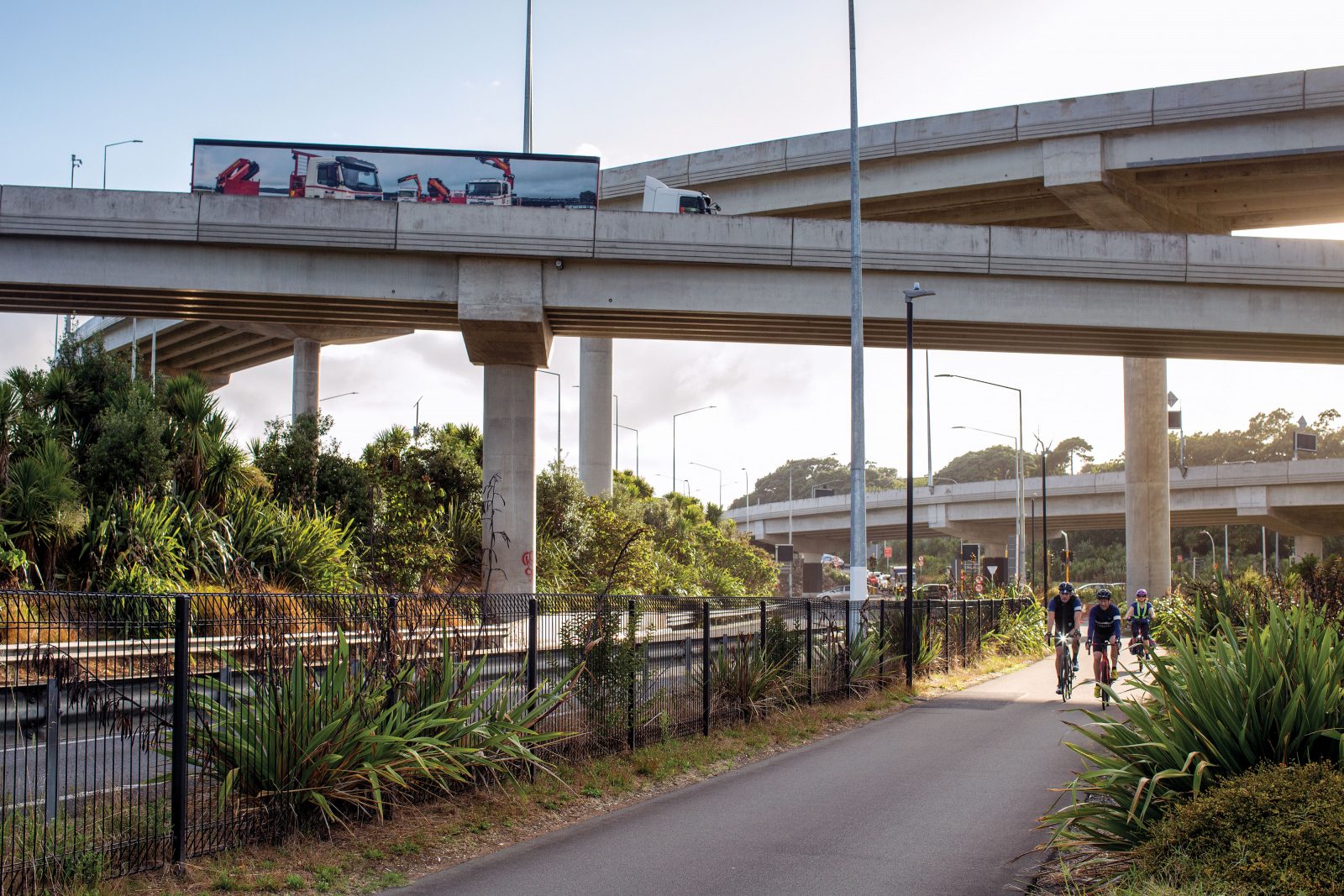
The dangers of Oteha Valley Road are well documented. There were 11 crashes involving pedestrians and cyclists there between 2011 and 2021. A month after Christine was struck, 15-year-old cyclist Nathan Kraatskow was killed in a hit-and-run a few hundred metres down the road, near its on-ramp to State Highway 1.
Bike Albany chairman Nicholas Carman says Oteha Valley Road was a time bomb, and Christine its unlucky victim. He believes her life could have been saved if Auckland Transport (AT) had installed a controlled pedestrian crossing closer to Harrowglen Drive, lowered speed limits, or even just built infrastructure that signalled to drivers that their unhindered commute wasn’t the sole priority. “In the Christchurch earthquakes, the CTV building collapsed and afterward they found out who designed it and held him accountable,” he says. “What’s any different about a road death? It’s just that these deaths are normalised.”
Christine’s husband, Darryl, told New Zealand Geographic that AT prioritised the flow of the traffic over the safety of pedestrians like his wife. “I was astonished at the time that Harrowglen Drive was constructed that either a roundabout or traffic lights were not installed,” he says. He, too, believes the responsibility for Christine’s death should stretch beyond the driver who hit her to the people who designed the road in a way that made serious crashes all but inevitable. “If there had been traffic lights controlling the intersection with Harrowglen Drive at that time, she would not have been forced to take her chances with the traffic.”
The crash that killed Christine will go down as a case of driver negligence, but many of those who have looked at it closely are united: this was in part a case of death by design.
[Chapter Break]
It’s tempting to see our cities as the product of forces beyond our control. But cities are the result of thousands of choices—decisions about who or what is important—and it’s only relatively recently that cars took centre stage.
The chain of events that led to Christine’s death was set in motion in 1955, with the tabling of a dry report titled Master Transport Plan. It outlined a revolution in the city’s transport system. At the time, Auckland’s 387,000 residents were taking roughly 100 million public transport trips every year—258 each on average—mostly thanks to the city’s popular electric trams. The report’s authors said Auckland was too sprawling for that to be feasible in the future. They suggested a different model: a state-of-the-art urban motorway system.
The Master Transport Plan featured images of free-flowing American highways. The eight-lane Eastshore Freeway in San Francisco was pictured next to a huge clover leaf-shaped interchange in Indiana. Politicians were won over. In the coming years, Auckland’s extensive tram network was ripped up. Bulldozers carved their way through Grafton Gully, demolishing whole neighbourhoods, and motorways began to hem the city centre.
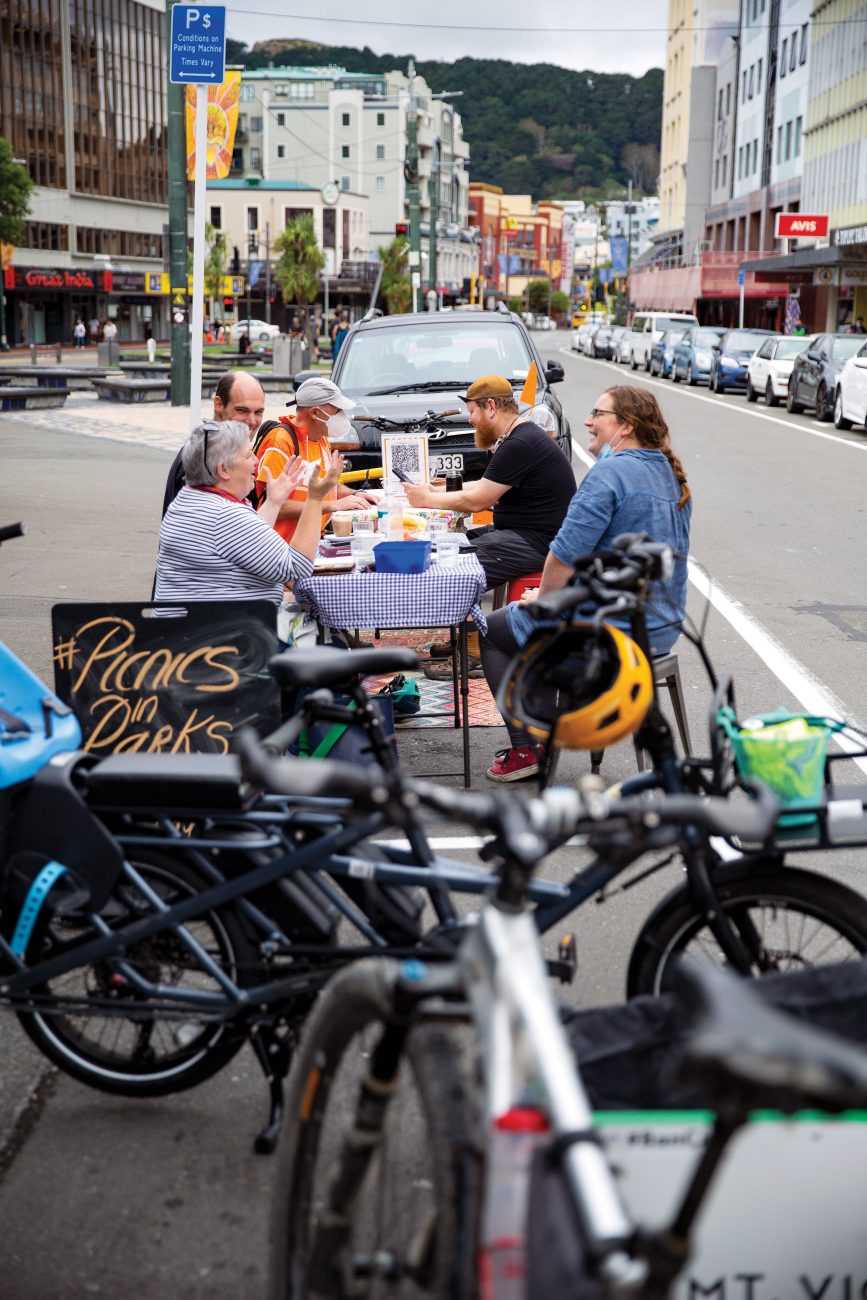
In the early 1970s, there was a meaningful opportunity to set the city on a different trajectory. Dove-Myer Robinson, known as Mayor Robbie, toured Auckland’s eight boroughs selling a vision of a rapid rail network. Trains would run every three minutes to hubs in the central isthmus, and across the Waitematā Harbour to the North Shore. Sir Bob Harvey, who would later serve for 18 years as mayor of Waitākere City, accompanied Robinson to the presentations as the mayor’s advisor. He says Robinson was spurred on by visits to the sprawling car-centric cities of the United States. “He went to LA, went to Chicago. He saw the absolute horror of car-driven LA, got us together in his house one Sunday afternoon and said, ‘We cannot let this happen’.”
Robinson spelled out his premonition in a series of Herald columns co-written with Harvey. He predicted a city choked by congestion, arguing that if his plan wasn’t adopted, governments in future decades would eventually have to build much of what it proposed at far higher cost. Opponents scoffed at the network’s $273 million price tag. It was rejected by other borough mayors and eventually nixed by Rob Muldoon’s National government.
Everything Robinson predicted came to pass. Rid of the incentive to cluster development around public transport hubs, Auckland unfurled across the countryside in a patchwork of 800-square-metre sections. Cars flooded the ever-widening streets. Public transport withered and almost died: by the 1990s each Aucklander averaged just 33 trips per year on the city’s remaining buses and trains. More recently, the government and Auckland Council have committed huge chunks of their transport budgets to retrofitting parts of Robbie’s network, with a new light rail link to the airport alone expected to cost $15 billion. The Master Transport Plan set Auckland up for car dependency; rejecting Mayor Robbie’s plan made it inevitable. “It was like a monster movie,” Harvey says. “We unleashed the killer of our city.”
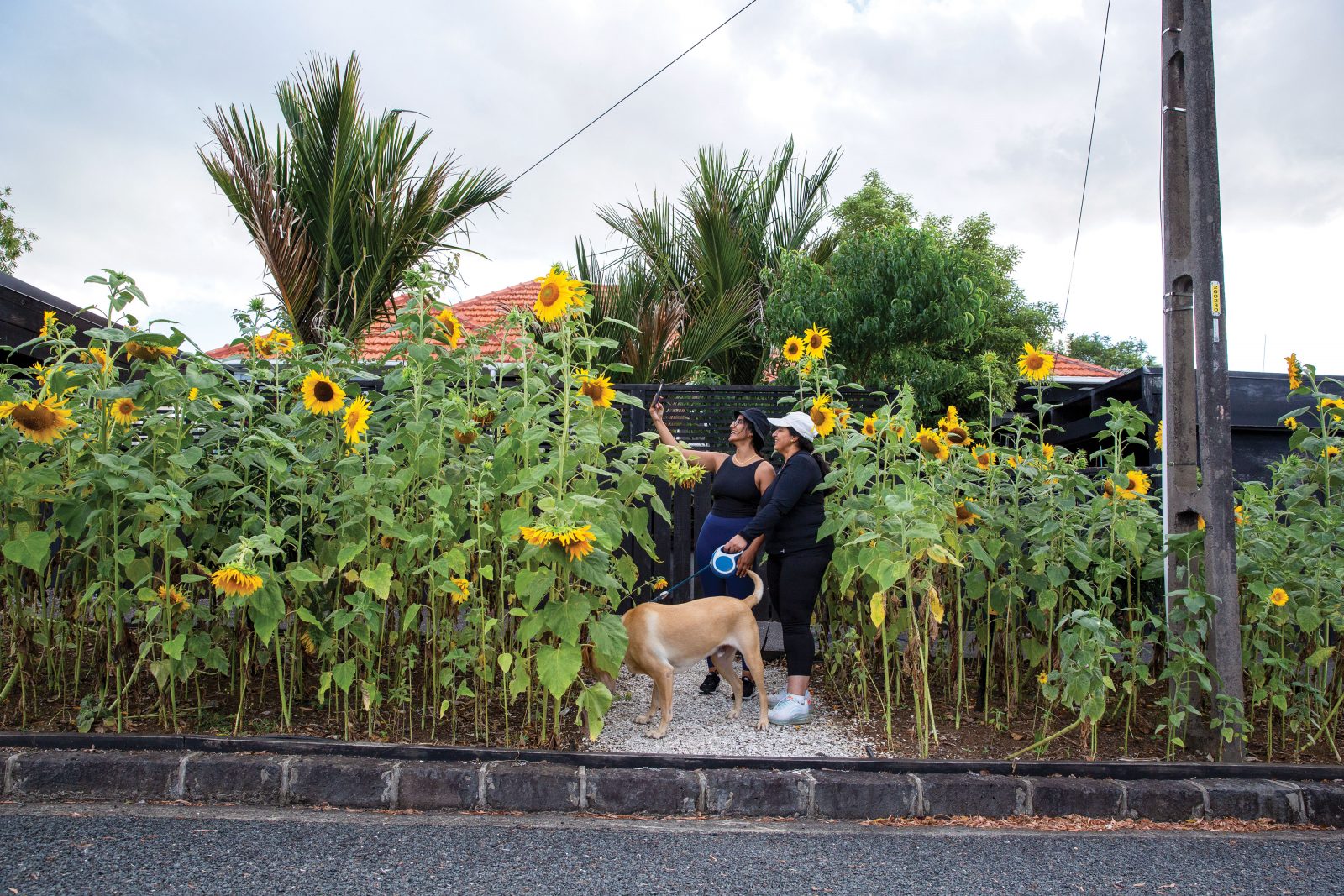
Similar transformations took place around the country. Though Christchurch has developed a popular network of urban cycleways, it remains the most car-centric city in New Zealand, with just 35 per cent of its residents using public transport each year (compared to 60 per cent in Auckland and 77 per cent in Wellington). Tom Logan, a lecturer in civil engineering at the University of Canterbury, says that’s also the result of a long history of planning decisions which have seen motorways as the future and cars as freedom. “If you’re not living near the inner city, you do have to rely on a car for everything you do,” he says.
At first, the downsides of car dependence were rarely articulated, except under subheadings in council transport reports devoted to “externalities”. Over the decades, the toll of those externalities has become more clear. Car use has dislocated us from each other and our built environment. Many people, but especially children, have been slowly shunted out of public spaces by the ever-present danger posed by vehicles. In the 1970s, 20 per cent of Auckland’s intermediate-school children cycled to school. That figure is now 3.9 per cent. Research shows residents in streets with heavy traffic have fewer friends than those who live in areas with fewer cars. Our environmental and physical health has degraded as roads have taken over urban space. Transport now accounts for 36 per cent of Aotearoa’s carbon emissions, and New Zealanders spend 1.5 billion hours travelling every year, of which 82 per cent is spent in cars. Research from Vancouver calculates driving’s cost to society at roughly $3.20 per five kilometres, once environmental damage, traffic congestion, and the health effects of physical inactivity and air pollution are factored in. (Walking, meanwhile, gains society $1.24.) André Brett, a transport historian at Curtin University in Perth, points to more intangible impacts: the ways our sprawling cities have shaped the way we live.
“We lost choice. We lost mobility. We lost the ability to travel in a more sustainable sort of way.”
Our decision-makers may not have anticipated these consequences when motorway systems were designed. But they anticipated the deaths. “Conflict with pedestrians”, the Master Transport Plan intoned in a section headed “Specific problems”. Christine experienced one of those ‘conflicts’ in 2018. Michael Sheffield, 73, encountered another in May 2021, his bicycle crushed under the wheels of a truck after it exited one of the motorways mapped out in the Master Transport Plan. They are part of a grim parade that’s lasted more than 60 years. Road deaths have hovered between an annual high of 843 in 1973 and a low of 253 in 2013. Lately, those figures have been ticking up; crashes killed 319 people in 2021, while the 2021-2022 Christmas holiday period was the deadliest since 2016, with 17 people killed. Pedestrians and cyclists account for an outsize share of those statistics, particularly in cities. In 2020, 57 per cent of those killed on Auckland’s roads weren’t in a car. Cyclists were 14 times more likely to die than motorists.
Harvey sees those numbers as an indictment on politicians and planners who’ve presided over car-centric systems for decades while failing to mitigate the harm they cause. “They changed our lives and for generations they wrecked those lives and turned us into dispirited, disconnected people,” he says. “We might have thought we were living in little LA. In fact we were living in a little old Hell.”
[Chapter Break]
It is possible to design streets that don’t kill anyone—even in cities with high car ownership. Gothenburg, a Swedish city of more than 600,000 people, recorded just three road deaths in 2018—one more than on Oteha Valley Road alone that same year. Neither Helsinki nor Oslo recorded a pedestrian fatality in 2019. These cities have prioritised other modes of transport over cars. They lowered speed limits and removed on-street car parking. In the newly vacant space they built protected bike paths, dedicated public transit lanes, and pedestrian infrastructure. The changes have come at little cost to drivers. The Netherlands has the most expansive network of protected bike lanes in the world, and also the highest driver satisfaction, mainly because those cyclists are no longer in cars adding to traffic.
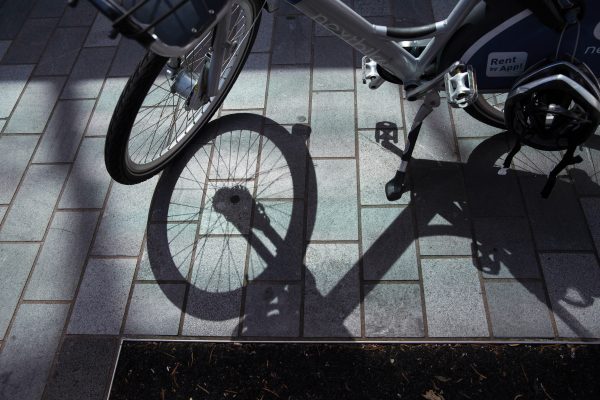
Waka Kotahi NZ Transport Agency and local authorities have officially signed on to versions of Vision Zero, a strategy pioneered in Sweden in the 1990s, which impels them to treat all road deaths as unacceptable and ultimately preventable. Vision Zero holds that the officials charged with shaping our roads and public spaces are ultimately responsible for ensuring people’s safety. In practice, that means lowering speed limits, and separating pedestrians and cyclists from cars. Despite that, progress on pedestrian and bicycle safety has been glacial in many towns and cities. Even in Auckland, where the Vision Zero mantra is printed at the bottom of every consultation document, the cycling network remains hodgepodge and unconnected. Efforts to improve it are, if anything, slowing down. Auckland Transport promised 16 kilometres of new cycleways in 2016/17, and scaled that figure back to four kilometres by 2020/21. Meanwhile, the city’s public transit fares are the third most expensive in the world, and the council spent just $1.7 million on new footpaths in the 2020/21 financial year. On Oteha Valley Road where Christine died, the road is still four lanes wide. It doesn’t have a protected cycleway or widened footpaths. The only safety improvements made after her death were the installation of a new traffic light and the removal of a slip lane.
Transport safety advocates say these decisions speak to the stubborn prioritising of traffic flow over safety. Auckland University environmental sociologist Kirsty Wild sees this as a moral failure to protect the most vulnerable people using our roads. She wants the government to legislate transport in a similar fashion to smoking, instituting laws requiring local authorities to reduce harm.

“We’ve got a situation where an adult man goes to work, and he has a right to be safe in that environment. There will potentially be prosecutions if he gets hurt. But little kids walking to school have none of those same protections.”Gareth Jones’ brother was one of the 319 people killed on the roads last year. His pain is sharpened by the feeling his brother’s death was preventable. Warrick Jones died while cycling past the notoriously dangerous intersection of Lake Road and Montgomery Avenue in Auckland’s Belmont. Jones knows his brother could still be alive if officials had a different set of priorities. “If you’re just thinking cars need to get there two minutes faster, then people will keep dying. But if people getting to places safely becomes the dominating mindset, then that’s what will result,” he says. “You should be able to go from home to another place without being under threat.”
[Chapter Break]
Why has so little changed in recent decades? The answer may, in part, lie with the needs and priorities of those who make the decisions about transport infrastructure: people whose primary experience of our streets is as a driver making singular trips to and from work.
Local councils, which make most of the meaningful decisions on how streets are laid out, are dominated by older, Pākehā men. Before the 2019 local elections, 91 per cent of councils nationwide were male-dominated, women were less likely to hold leadership posts, and people identifying as New Zealand European were overrepresented in elected positions. Council voter numbers were similarly skewed, with Pākehā having the highest percentage turnout of any ethnicity as well.
On the flipside, society’s most marginalised people tend to be least likely to be heard by governments or transport industries in consultations. In a 2020 study, Auckland University’s Inclusive Streetscapes team interviewed 62 older, disabled, or bodily-diverse participants, and found their needs were routinely ignored by local authorities. Other groups are also left out of the discussion. Few young families, for instance, have the time to attend a town hall meeting at 7pm on a Tuesday night. People scraping by with two jobs don’t have hours to pore through council documents on the latest road layout adjustment. Wellington councillor Tamatha Paul says she’s seen first-hand how the majority of people are excluded from the decisions shaping their streets and neighbourhoods. “Community participation is really just a codeword for maintaining the status quo. There’s only a particular type of person who has the time to pay that kind of attention.”
The inertia of the status quo, even in the face of evidence it’s causing harm, is apparent on Lake Road, where one month after Warrick Jones’ death, the Devonport-Takapuna Local Board rejected a $47 million upgrade to improve safety in the area where he was killed. When asked to justify the decision, board member George Wood explained that motorists would go “spare” when they learned the upgrade prioritised cycling and public transport infrastructure over delivering more car lanes. He wasn’t exaggerating. In several New Zealand cities, protesters have used forklifts, cars, or sledgehammers to dismantle bike and pedestrian improvements. Public health physician and transport advocate Rhys Jones dubs these groups the “pro-death lobby”, and says he’s seen them have an outsize impact even when they represent a sliver of the wider community.
[Chapter Break]
In a central Auckland cafe, Emma McInnes rattles off the ways cities are shaped around the tastes of those who deliver the loudest feedback and disproportionately occupy the top tables inside councils. There aren’t enough public restrooms or places to rest, particularly for parents with children. Streets are often poorly lit and desolate after dark. Footpaths aren’t wide enough for prams. Many of these issues stem from how streets are optimised for cars, which are driven disproportionately by men. A Waka Kotahi survey carried out between 2011 and 2014 showed men drove 12,000 kilometres per year on average, while women averaged just over 8000 kilometres. Women were more likely to be non-drivers, too; 15 per cent of women over 65 had never driven, compared to two percent of men in the same age bracket. Roading comprises the majority of the national transport budget.
“Cities have been designed by and for men since Aristotle and Plato were around,” says McInnes. “They’re saying, ‘This is how I move around a city. this is what would be comfortable and easy for me’.”
Without a car, McInnes found she needed half a day to travel across Auckland on public transport to attend hospital appointments—a journey that was a 10-minute drive. Multiple studies have found that women make more of these crosstown journeys than men, and are more likely to stop multiple times on a single outing to perform tasks such as dropping children off or picking up shopping. Those trips are often ignored by transport planners, who tend to design for a commuter going directly to work and back. McInnes’ experience became an origin story: she trained as a planner and set up the advocacy group Women In Urbanism, where she highlights the ways the preferences of men are foregrounded in cities.
Tamatha Paul sees evidence of that prioritisation every time she goes home. The windy road in Wellington’s Aro Valley where she lives has no footpath, and just three streetlights in the span of a kilometre. She takes care not to walk after dark. Paul says the street is her city in miniature; a daily reminder of how it’s often hostile or unsafe for women. “It wasn’t designed for me,” she says.
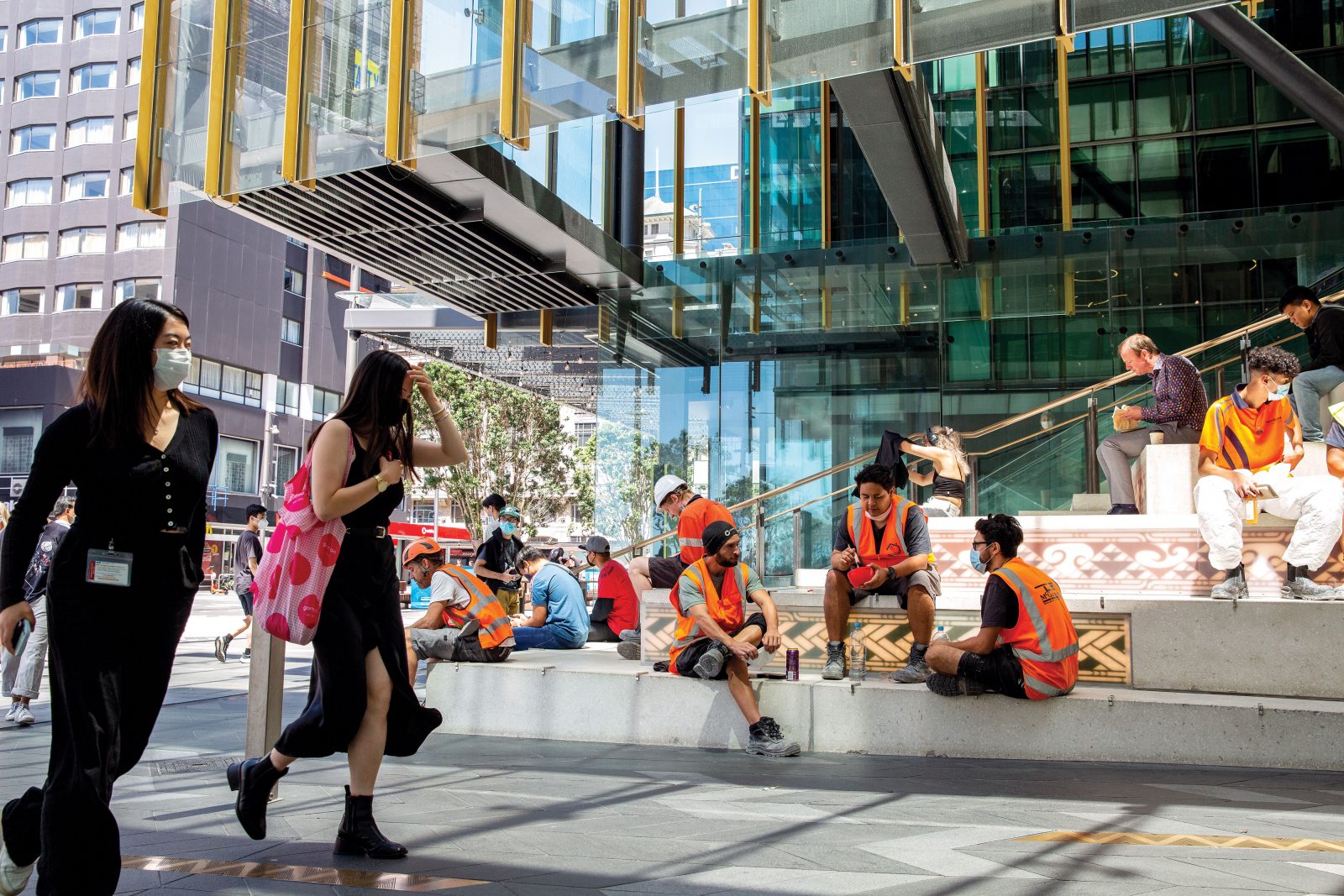
She also feels frustrated by the way Pākehā culture has imbued itself in Wellington’s built form. She’s scathing of the city’s stringent character protections, which have served to prevent dense development on the villa-lined streets of its inner suburbs. At a recent council debate, she acidly proposed renaming the character areas “colonial streetscape precincts”. The amendment was voted down, but it served its purpose: reminding people whose tastes are being elevated by the council. Paul’s concerns aren’t just aesthetic. Single-house zoning and character protections push population growth into outlying areas and commuter towns, where cars become the only viable transport option for many workers. A 2013 study led by researcher Kimiora Raerino highlights how that mandates car dependency, which amounts to a tax on working-class and poor people, who are more likely to be Māori. It also creates an economic feedback loop, where car ownership is necessary for employment, and having an income is necessary to be able to buy and maintain a vehicle.
“The people who actually keep the city running don’t live in Wellington City,” Paul says. “That’s not what cities are designed for. They’re designed for people to live close to their work.”
Jade Kake, an architect and housing advocate, agrees that Aotearoa’s streets are marked by the legacy of colonialism, with government planning rules serving to reinforce Pākehā tastes and interests. If the Crown hadn’t wrested land and power off iwi, she believes cities would likely have developed in a network of dense, self-contained but interconnected neighbourhoods, in line with early Māori kāinga. “I see our cities as a colonised landscape,” she says. “Now, it’s difficult to decolonise even if you have control over the land, because the planning roles and building rules are coming from a predominantly Pākehā perspective.”
Erin Gough gets daily reminders that her neighbourhood wasn’t made with her in mind. They come in the form of steps up to the front doors of the bookshops and cafes in Newtown, or the fact the city’s small fleet of accessible taxis are booked out weeks in advance. “Your life is not seen as valuable as other people’s, and that shows in how things are designed,” she says.
Gough is a wheelchair user, and her story is far from unique. One disabled participant in the 2020 Auckland University Inclusive Streetscapes study was trapped in her house for two weeks because the council hadn’t fixed a footpath outside. Another participant, identified as Marama, became isolated after State Highway 20 was extended in 1982, cutting off her block of flats from the nearby Māngere Bridge township. “I’d like to make a lot of journeys, but I depend on other people because there’s no buses,” she told the study’s authors.
The motorways were meant to bring freedom, and for a subset of people that promise has been fulfilled. For others, cars have been a cage.
[Chapter Break]
Anthonie Tonnon is standing in front of a dilapidated rail yard in Whanganui, talking about what used to be. The rusted carriages and broken train station turret before him were once part of a network that boasted a thriving passenger rail service, and a maintenance hub which employed 250 workers. A little further along, there are some rotted piers where barges used to berth, the remains of a ripped-up tram line, and Crazy Pumpkin, a fruit and veg shop on the site where the riverside town’s central station once stood. “We’re a beautiful ruin,” Tonnon says. “But we’re also quite a nice place to live, and there’s possibilities in those ruins.”
Tonnon has spent the past few years trying to realise those possibilities. Whanganui is far from an urbanist’s paradise. Just like Auckland, it dismantled its public transport as cars swept in. But unlike Auckland, it didn’t replace that system with a jungle of motorways and four-lane residential roads. Thanks to decades of economic deprivation and slow growth, the town still mostly sits on its original footprint, centred around the river and its decaying transport hubs.

That presents opportunities for change, and perhaps even restoration. While others see Whanganui’s former glory, Tonnon sees its potential greatness. He moved there five years ago, around the same time his folk-pop songs started being nominated for Silver Scrolls, and almost immediately started agitating for improvements. Eventually, the district council relented and made him its public transport ambassador to the Horizons Regional Council, which controls the town’s irregular bus service. Tonnon’s realm of responsibility has since expanded further, with the council giving him the contract to run the Durie Hill Elevator: a lift stationed down the end of a 200-metre tunnel near the town centre, which rises up through a hand-cut shaft into a 4000-person suburb. Tonnon has enlisted fellow musicians to staff the elevator, which he calls the town’s only rapid transit service, thanks to its three-minute frequency.
At midnight on a Saturday, Tonnon hovers over his laptop, flicking through pictures of what he hopes is the future. He’s painstakingly drawn up a scheme to reprioritise the town’s buses to provide 15-minute frequency on one line at little extra cost. In another compartment of his hard drive, there’s a plan for bringing back inter-regional transit to Wellington. It’s filed alongside the backing tracks for his show Rail Land, which involves carting audiences to venues on hired trains in a bid to impart a small vision of a more egalitarian transport system. “My idea is to just try everything,” he says. “I think that everything is broken. Politicians don’t seem to be able to do anything. Everybody’s stuck. I’ve got a role in the bureaucracy. I’m seeing if I can make it work. I’m now a public transport operator as well. I’ll see what I can do with that. I’m an artist and I have a show where I can make public transport exist for one night, and I’m trying that, too.”

Whanganui is a small town, and that kind of spirit is contagious. Ellen Young is another trying to push it toward a more sustainable future. On a sunny weekend morning, crowds of people gather on Drews Avenue in the centre of town, sipping coffee at a table set up under a cast-iron shelter. A group of children are playing with a poodle. Older people are sunning themselves on a long bench pushed against the outside wall of an adjacent coffee shop. A few months ago, this meeting place was a row of car parks. Young, a project manager and friend of Tonnon’s, started transforming the area after winning funding from the government’s Innovating Streets fund. Similar projects have been dismantled after protests around the country, but this one has stood the test of time. It even seems to be expanding. While we talk, a local artist comes to speak to Young about the design of a future pedestrian-friendly installation elsewhere in town. “There’s a lot of people who don’t know how to picture an alternative reality,” Young says. “You have to help them picture that, and you also just have to understand some people won’t get it till it’s there.”
Kathryn King, an urban mobility manager at Waka Kotahi who spearheaded Innovating Streets, says the programme is aimed at seeding a bigger change. “We see it as a snowball,” she says. “So the sorts of things we saw last year might have looked small, but they’ve got people thinking that change might be possible in their town or city.” King lists what she would like to see: people feeling safe to cycle to the dairy to get milk, friends stopping to talk to each other in streetside pocket parks, and children being able to play in the street without their parents being worried.
“Streets can be places we stop and enjoy,” she says. “And the places that we enjoy most are the ones that are quiet and not dominated by fast-moving cars.”
















